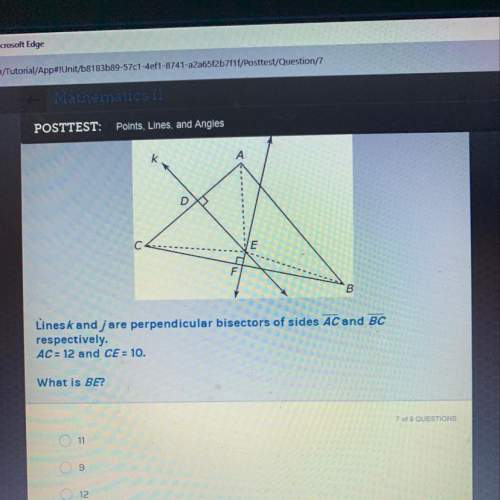Let the random variable yn have a distribution that is b(n, p).
(a) prove that yn/n con...

Mathematics, 25.12.2019 07:31 Amyra2003
Let the random variable yn have a distribution that is b(n, p).
(a) prove that yn/n converges in probability to p. this result is one form of the weak law of large numbers.
(b) prove that 1 − yn/n converges in probability to 1 − p.
(c) prove that (yn/n)(1 − yn/n) converges in probability to p(1 − p).

Answers: 2


Another question on Mathematics

Mathematics, 21.06.2019 16:30
Which choice represents the sample space ,s for this event
Answers: 3

Mathematics, 21.06.2019 16:30
Arestaurant gives out a scratch-off card to every customer. the probability that a customer will win a prize from a scratch-off card is 25%. design and conduct a simulation using random numbers to find the experimental probability that a customer will need more than 3 cards in order to win a prize. justify the model for your simulation, and conduct at least 10 trials.
Answers: 1

Mathematics, 21.06.2019 18:30
Acoin bank containing only dimes and quarters has 12 more dimes than quarters. the total value of the coins is $11. how many quarters and dimes are in the coin bank?
Answers: 1

Mathematics, 21.06.2019 19:00
The pyramid shown has a square base that is 24 centimeters on each side. the slant height is 16 centimeters. what is the lateral surface area?
Answers: 2
You know the right answer?
Questions


History, 04.12.2019 11:31

History, 04.12.2019 11:31



World Languages, 04.12.2019 11:31

Biology, 04.12.2019 11:31

Mathematics, 04.12.2019 11:31

History, 04.12.2019 11:31

English, 04.12.2019 11:31

Social Studies, 04.12.2019 11:31

Biology, 04.12.2019 11:31




Mathematics, 04.12.2019 11:31




Mathematics, 04.12.2019 11:31

 have a distribution thst id b(n, p)
have a distribution thst id b(n, p)![Pr[[\frac{Y_n}{n}-E[\frac{Y_n}{n}]\geq E]\leq\frac{1}{E^2}var[\frac{Y_n}{n}]\\\\=Pr[(\frac{Y_n}{n}-P)\geq E]\leq \frac{1}{n^2E^2}np(1-p)=0](/tpl/images/0432/7085/7815a.png)
![\frac{Y_n^P}{n}=PB)As mentioned in a), use chebyshevs inequality.[tex]Pr(\frac{Y_n}{n}-E(\frac{Y_n}{n})\geq E)\leq \frac{1}{E^2}var(\frac{Y_n}{n})](/tpl/images/0432/7085/4934a.png)
![Pr[(1-\frac{Y_n}{n}-(1-p))\geq E]\leq \frac{1}{n^2E^2}np(1-p)=0](/tpl/images/0432/7085/34352.png)

 obtained the following
obtained the following ![[\frac{Y_n}{n}]^2^p=p^2](/tpl/images/0432/7085/34cad.png)





